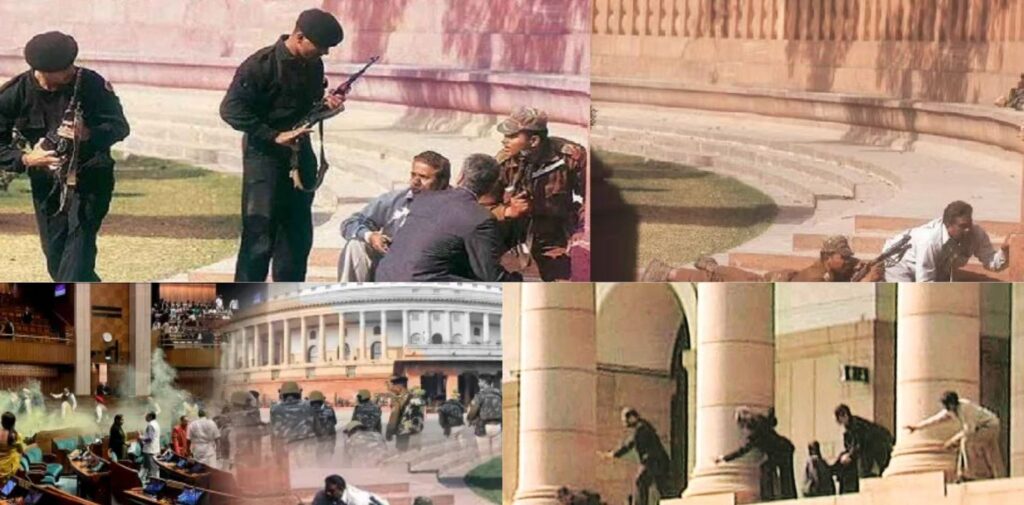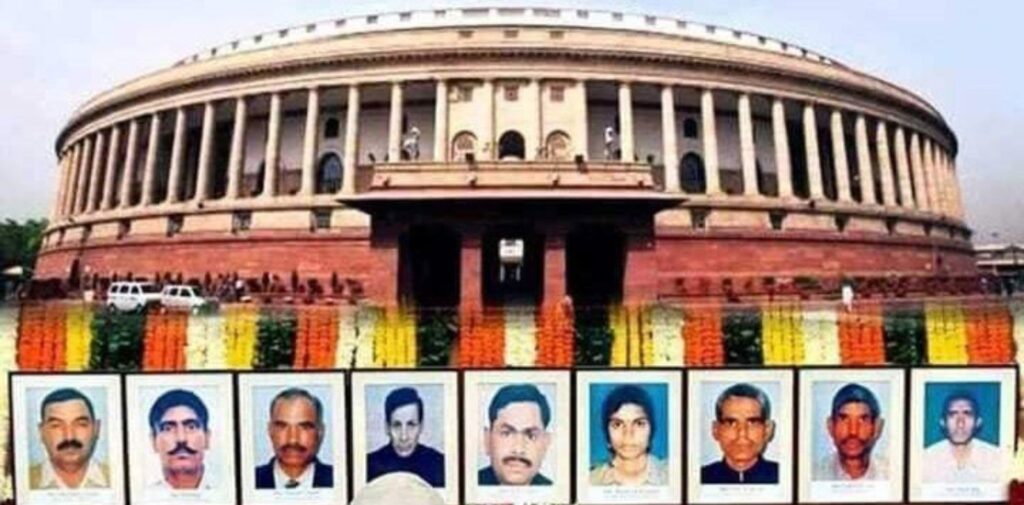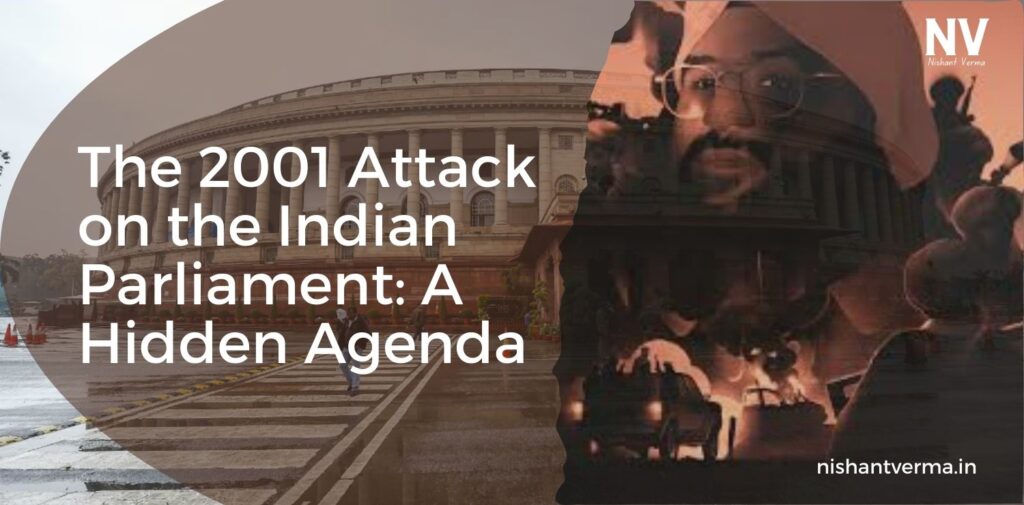On December 13, 2001, India witnessed one of the most audacious attacks on its democracy—the assault on the Parliament building in New Delhi. This incident, which resulted in the tragic loss of lives and injuries to many, was carried out by five heavily armed terrorists from Pakistan-based militant groups, primarily Lashkar-e-Taiba and Jaish-e-Mohammed. The attackers aimed to disrupt the democratic process in India and send a message of terror and chaos.
The Attack Unfolds
The terrorists stormed the Parliament complex during a busy day, when numerous lawmakers were present. Armed with automatic rifles and grenades, they engaged in a fierce gun battle with the security forces. The security personnel bravely fought back, ultimately neutralizing the attackers, but not before they claimed the lives of nine individuals, including police and security personnel, and injuring many other.
In the aftermath, the attack was condemned widely, both domestically and internationally. The incident highlighted the vulnerabilities in India’s security framework, especially concerning high-profile targets. Investigations linked the attack to Pakistan-based terror networks, raising alarm over cross-border terrorism.

The Broader Context: US Involvement
While the attack itself was a stark act of terrorism, the geopolitical implications surrounding it cannot be overlooked. In the early 2000s, the United States was significantly engaged in the region, primarily focused on counter-terrorism following the September 11 attacks in 2001. India’s struggle against terrorism was closely monitored by the US, which had its agenda in the broader context of South Asian stability.
The US had a vested interest in stabilizing Pakistan, as it was a key ally in the War on Terror. However, this created a paradoxical situation for India, which was grappling with the threat posed by militant groups operating from Pakistani soil. The US often urged India to exercise restraint in its military responses to such provocations to avoid further destabilizing the region. This dynamic indicated that while the US condemned the attack, its diplomatic approach often favored Pakistan, given the latter’s strategic importance.
The Hidden Agenda
The attack on the Parliament can be seen as part of a larger chess game involving global powers. The US, while ostensibly supporting India’s right to defend itself against terrorism, also had to consider its strategic ties with Pakistan. This relationship often resulted in a lack of decisive action against terrorist groups operating from within Pakistan’s borders, which infuriated Indian leadership and public sentiment.
The aftermath of the Parliament attack prompted India to escalate its military readiness and consider retaliatory actions. However, the US exerted pressure on India to refrain from direct military confrontation with Pakistan. This led to heightened tensions but also served the US’s interest in maintaining a balance of power in South Asia, which they viewed as crucial for broader regional stability.
Additionally, this event heightened the focus on counter-terrorism cooperation between India and the US, leading to increased intelligence sharing and military cooperation. Such collaborations aligned with the US’s strategic objectives in the region but often left India feeling unsupported in its immediate needs for action against terrorism.

Conclusion: 2001 Attack on Indian Parliament
The December 13, 2001 Attack on Indian Parliament was not merely a terrorist act; it was a turning point in the geopolitical landscape of South Asia. While the immediate response was to address the security threats posed by terrorist organizations, the hidden agenda of global powers, particularly the US, played a significant role in shaping the response and future policies regarding terrorism.
The incident serves as a reminder of the complexities involved in international relations and counter-terrorism efforts. It underscores the necessity for nations to remain vigilant not just against external threats but also against the broader geopolitical machinations that can influence their sovereignty and security. The interplay of local actions and global interests continues to be a critical consideration for India as it navigates its path toward stability and security in a volatile region.




